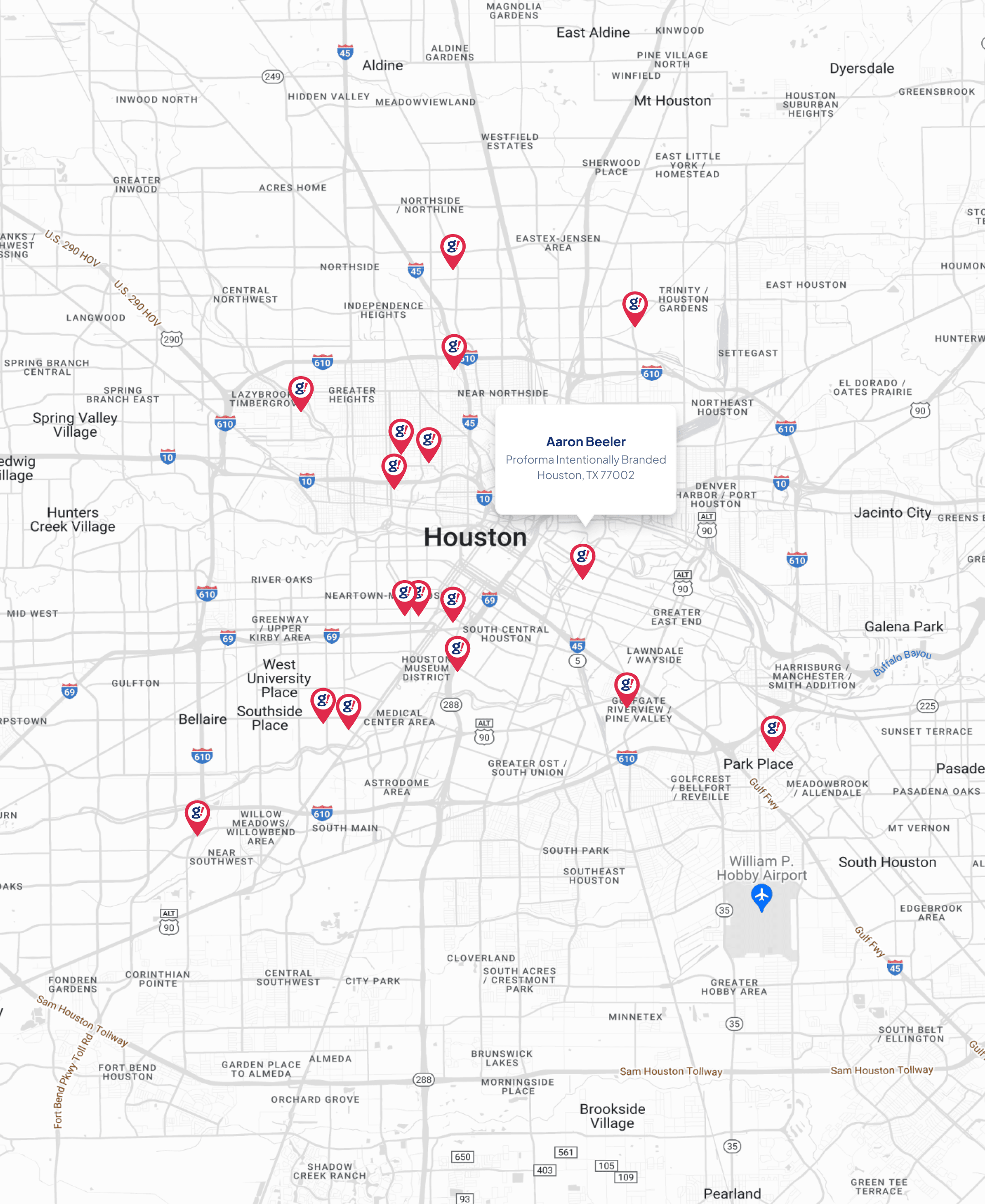How to Measure Website Traffic With Google Analytics
- Updated on: 2021-05-22
- Read original article here

Assuming you’ve mastered organic search visibility and you’re confident that your content is appearing prominently in SERPs, the next step is to examine how many people are visiting your site and where they’re coming from.
How do you know if your efforts are translating into traffic? How do you know if you’re connecting with the right audience? After you’ve identified what’s working, how do you capitalize on those opportunities?
The answers to all of these questions lie in understanding how to measure website traffic and learning what site traffic can tell you about your SEO efforts. By the end of this article, you’ll know how to access valuable insights into the volume of traffic coming to your website and what you can do to improve site performance as it relates to your SEO goals.
Website traffic measures the volume or quantity of people who visit a website. Measuring site traffic is one of the best ways to evaluate the effectiveness of your marketing and advertising activities because it shows you how big of an audience you’re able to attract.
Google Analytics uses the following three metrics to describe website traffic:
A “pageview” occurs every time a user loads a web page in their browser. So if someone visits a blog post, two service pages, and then the contact page, that visit would include 4 pageviews in total.
Each time someone visits your website, Google Analytics records it as a “session.” A session begins on the first page a user sees (aka the “Landing Page”) and ends on the last page they see before leaving or becoming inactive (aka the “Exit Page”). Sessions can include multiple pageviews so the number of pageviews your site receives will always be greater than or equal to the number of sessions.
Google Analytics calls unique visitors, “users.” Every time a new user visits your website, they’re assigned a unique ID that tracks their return visits. If the same user visits your website three times, Google Analytics will associate those three sessions with the same user. As such, the number of sessions your site receives will always be greater than or equal to the number of users.
Each one of the metrics defined above can yield valuable information about how many people are arriving on your site and what pages they visit most often. Pageviews, sessions, and users each measure slightly different things but they tend to follow the same patterns, so the one you should track will depend on your business objectives and SEO goals.
All three of these traffic metrics can be tracked across several different channels of traffic. So, let’s dig into the different types of web traffic, how they’re unique from each other, and which ones most directly apply to SEO.
Google Analytics breaks down website traffic into several different categories called “sources” or “channels.” Segmenting website traffic by source helps answer a fundamental question in digital marketing: “How are people finding my website?” Of the four acquisition channels listed below, organic search traffic is the only one that relates directly to SEO, but the others are important to understand for reasons I’ll dive into later.
Also known as “natural search,” organic search is the traffic from search engines like Google, Bing, and DuckDuckGo . Organic search traffic is generally considered one of the key performance metrics for SEO because it measures the volume of unpaid clicks your site receives from search engine result pages (SERPs).
In Google Analytics, referral traffic measures the visits to your site from links that appear on other websites. Because a “referral” is considered a recommendation from another site, strong referral traffic can be an indicator of how Google perceives the credibility of your website. Referral traffic can have a direct impact on your search rankings. The hyperlinks that refer to this kind of traffic to your site are also known as backlinks and are an essential ingredient of any SEO campaign.
Google Analytics defines direct traffic as web visitors who’ve arrived on your site by typing your URL directly into a browser or by clicking a bookmark they had saved. But be aware that GA also uses this category as a catch-all for traffic whose source it cannot define. (Learn more about direct traffic in Google Analytics here.)
Social traffic comes to your site through social networks or social media platforms. For example, if someone clicks through to your website from a tweet or Facebook post, Google Analytics will attribute that to social traffic. Technically this is referral traffic, but Google understands that social media plays a special role in marketing and advertising so it separates it from the rest of the referrals.
Since SEO campaigns are focused on boosting organic traffic to your website, there’s obviously a lot of value in measuring site traffic specifically from search engines. But first, I want to make a quick distinction between the different types of results searchers find on SERPs.
Although organic search and paid search live in the same neighborhood of search results, they’re very different. A search for “best seo companies” returns both paid and organic results in this example. Paid search ads appear at the top of the page, with organic search results below. There are a few important distinctions to make between the two.
Beyond those differences, organic search traffic is more likely to drive qualified leads to your site since keyword research is designed to attract people who want what you have to offer.
No amount of resources spent on SEO matters unless you’re driving organic traffic to your site. Growth in organic sessions over time is one of the strongest indicators of SEO performance. A month-to-month or quarter-to-quarter uptick in visitors to your site from search engines shows that your SEO performance is improving.
If you’re not familiar with where to find organic traffic metrics in GA, head over to your dashboard, and we’ll walk through it together.
Navigate to Acquisition > Overview, and you’ll see a general breakdown of all the different channels sending traffic to your site.
If you click the blue “organic search” link, you’ll find more granular information about your organic traffic. The first thing you’ll see is a rather useless report that breaks down your organic traffic by keyword. For privacy reasons, Google Analytics doesn’t provide great keyword-level data.*
Fortunately, all we really need is page-level data so click on Landing Page for more valuable insights. This table breaks down how much organic traffic each of your pages is receiving.
* There is a work-around to access what’s behind Google Analytics Keyword (not provided). Click here to learn how.
In the example below, I’m looking at which blog posts drive the most traffic to the Victorious blog.
I got here by going to Behavior > Site Content > Landing Pages, filtering by the name of our blog directory, and filtering for organic traffic.
By default, landing pages are listed by the number of sessions, from highest to lowest. This view allows you to take a closer look at what content is performing well and apply what you learn to lower-performing pages.
Of the values listed under “Acquisition,” “Sessions” is the only true traffic metric, from which “% New Sessions” and “New Users” are derived.
Everything under “Behavior” refers to engagement. There’s a LOT to learn about your content from engagement metrics, but I’ll cover that in a separate article.
The values listed under “Conversion” pertain to how successfully your pages are converting visitors into prospects and eventually customers. There’s also A LOT to learn here, but, I’ll also cover that in another article.
I do want you to take a quick peek at your conversion metrics in the context of organic traffic for one reason, though.
Look at the conversion rates of your most-visited pages. If those highly trafficked pages aren’t converting, you’re missing out on your best opportunity to move people down your marketing funnel. Consider running a conversion analysis on those pages so you can make the most of that traffic. On the other side of that coin, if you sort these pages by conversion rate, you’ll find your highest converting pages and can optimize them better for search so you can bring more traffic to them.
To see which pages might need extra optimization or need to be pruned altogether, click the arrow in the sessions column to reverse the order and float your lowest-performing pages to the top of the list.
Referral traffic is Google’s channel for reporting visits that come to your website from websites other than search engines, social networks, and emails. If someone finds your website by clicking a link on one of these websites, GA typically tracks that as a referral visit.
Referral traffic is important because it sends potentially qualified visitors to your site from another trusted website. These backlinks represent the opportunity to get your content in front of more people than organic search alone. If the backlinks that create referral traffic are on a credible website, that context lends further credibility to your content, just like a recommendation from a friend makes you feel more comfortable about trying a new restaurant.
Google considers referral traffic from backlinks a sign of social proof that increases its perception of your site’s authority and trustworthiness and positively impacts your search rankings.
Just as links from reputable sources boost your credibility, low-quality links can negatively impact your search ranking. All the more reason to keep an eye on your referral traffic. Learn more about what makes a quality backlink.
There’s a lot to be learned from examining your referral traffic. First, understanding where your referral traffic is coming from helps you identify the tangential interests and habits of users clicking through to your site.
For example, if you sell sneaker insoles and you’re getting a lot of referral traffic from a skate shoe brand, you might deduce that skateboarders are interested in what you sell.
A revelation like this might inform your SEO strategy, prompting you to create content that targets that demographic so they can find you through organic search.
Likewise, using the context of referring sites to understand visitors to your pages can help you optimize conversion pages for specific demographics that will move them through your marketing funnel to impact your revenue goals.
From your GA dashboard, go to Acquisition > All Traffic > Referrals.
Here, you’ll see a list of sites that have referred traffic to your pages, sorted by session volume. To evaluate the quality of your referral traffic, you’ll want to look not only at the total number of sessions but how those visitors are engaging on your site. For example, which sites have the highest average session duration? Are visitors from certain sites converting at a higher rate than others?
Use what you learn here to see where your most engaged (and profitable) referral traffic is coming from, strategize ways to boost those referrals and find similar sites to build backlinks. Then, as I mentioned above, tweak your SEO strategy to capture a demographic you might not have identified before as prospect-rich.
At face value, direct traffic is (mostly) made up of people who know exactly where they want to go. Google Analytics categorizes users who type your URL directly into your browser or bookmark your site as direct traffic.
Google Analytics will also report a traffic source as being “direct” when it lacks sufficient data about how the session arrived at your website. This type of misattribution to direct traffic is GA’s fall-back option when it doesn’t know how to attribute a session. Perhaps a more appropriate name for these sessions would be “unknown traffic.”
This is why another SEO Agency might dismiss metrics from the direct traffic channel as having little use in the context of search optimization. While these numbers have no direct bearing on your SEO campaign, it’s valuable to understand what causes the misattribution of other kinds of traffic into the direct traffic channel, and clean up what you can, so the rest of your traffic metrics are an accurate reflection of your optimization efforts. Learn more about what causes direct traffic and how to address traffic channel misattribution in this blog post..
It can take as long as 24 hours for data to appear in Google Analytics. However, GA starts tracking data from the moment you implement the tracking id on your website. Unfortunately, there’s no way to recover historical traffic data from before implementing Google Analytics.
If you set up your tracking ID and don’t see any data after waiting a couple of days, double-check the implementation to make sure there aren’t any errors.
A simple way of checking your code implementation is to install the Google Tag Assistant extension for Chrome. It will show the tracking id and status for your site.
To find the most viewed pages on your website, go to your Google Analytics account, click on Behavior > Site Content > All Pages. The list defaults to show the most viewed pages at the top.
I recommend you track your traffic metrics weekly because they’re prone to fluctuation. Traffic metrics are a good initial indicator of campaign success or, on the flip side, offer an early warning for technical issues that could impact your search visibility. Look for inexplicable peaks or valleys every week, and keep an eye on MoM or YoY comparisons to spot cycles (seasonality) or trends in either direction.
In general, the more traffic you have to your website, the more opportunities you have to generate qualified leads, nurture prospective customers, and sell your product or service. While the number of sessions alone doesn’t absolutely correlate with business success, getting people to come to your site is the first step to building a thriving online business.
There are some basic things you can do to boost your referral traffic, including:
But, the most effective way to increase your referral traffic is to include SEO link building services in your overall marketing strategy.
In this case, you’re attracting searchers to your website, but they aren’t your best prospective customers. In this situation, you’ll want to employ keyword research services to get help targeting queries that are relevant to your prospective customers.
Google Analytics interprets click-throughs from Facebook as referral traffic. As a result, you might see referral sources like these in your GA reports:
You can apply a filter to your reporting view in Google Analytics to combine all the different Facebook referral sources into a single source. Learn more about how to do that here.
Learning how to measure website traffic is the first step to understanding how SEO services impact your business. Because your SEO goals are unique to your business, the way you analyze your website traffic will also be unique and may evolve over time.
Learning more about SEO doesn’t mean you have to do it by yourself. At Victorious, our most successful partnerships are with customers who relish transparency and frank conversations about what’s working, what’s not working, and where to leverage campaign resources for the greatest impact on the metric that matters most — a return on your investment. So, if you’re ready to take the next step in SEO, let’s have a conversation about how we can help your website the get the attention you deserve.



